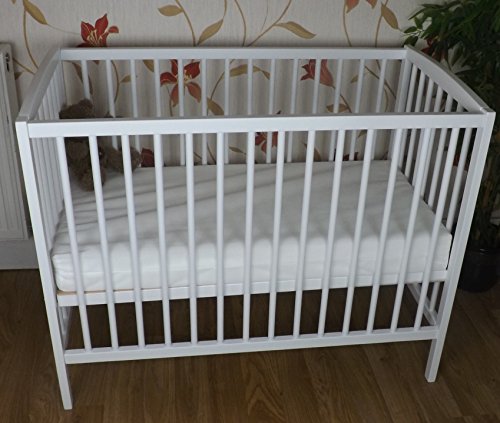Buzzwords De-Buzzed: 10 Different Ways To Say Tots And Cots
페이지 정보
작성자 Andra 작성일25-08-11 00:04 조회9회 댓글0건관련링크
본문
Tots and Cots: A Comprehensive Guide for Parents
When it concerns guaranteeing a safe and comfy sleeping environment for babies and young children, the choices moms and dads make-- varying from cribs to cots-- can considerably affect their wellness. Today's article dives deep into the intricacies of selecting the very best sleeping arrangements for tots, highlighting safety, style, performance, and how these choices develop as a kid grows.

Comprehending Tots and Cots
Tots normally refer to young kids, particularly toddlers aged in between 1 to 3 years, while cots are the sleeping plans specifically created for infants and toddlers. The proper sleeping equipment for this age includes numerous types of cots, cribs, and young child beds.

Kinds of Cots
Various styles exist to satisfy the diverse requirements of both parents and children. Below is a list outlining the most common types of cots available:
Standard Crib
- A standard crib is developed for infants and typically includes sides that can be adjusted to various heights.
Convertible Crib
- This kind of crib can transform into a young child bed, daybed, or full-sized bed as the kid grows, making it a long-lasting financial investment.
Portable Crib
- Likewise called travel cots, these are lightweight and easily collapsible, perfect for traveling or smaller home.
Co-Sleeper
- A co-sleeper crib connects to the side of the parents' bed, allowing for easy access while making sure the baby has a different and safe sleeping area.
Young child Bed
- A toddler bed is a little bed that resembles a basic bed but is developed particularly for toddlers, normally featuring safety rails.
Mini Crib
- Mini cribs are smaller than standard cribs, making them a great option for tight spaces, however they appropriate for babies just.
Security Considerations
Ensuring security is vital when selecting a cot for a child. Here are critical safety guidelines parents need to think about:
- Check for CPSC Certification: Ensure that the cot adheres to the Consumer Product Safety Commission (CPSC) requirements.
- Prevent Drop-Sides: Cots with drop-sides have actually been connected to security threats, and the current safety regulations restrict them.
- Utilize a Firm Mattress: A firm mattress lowers the danger of suffocation and ought to fit snugly within the cot.
- Keep Bedding Simple: Use a fitted sheet and avoid pillows, comforters, and packed animals that can present suffocation hazards.
- Follow Weight and Age Guidelines: Ensure the child has actually not surpassed the cot's weight limit and is still within the suggested age.
Transitioning from a Cot to a Toddler Bed
The transition from a cot to a young child bed can be an emotional milestone for both parents and kids. Here are steps to reduce the transition:
Timing
Deciding when to shift can be subjective, however it's normally suggested to make the switch in between 18 months and 3 years, based on factors like:
- Physical Ability: If the kid is climbing out of the cot.
- Potty Training: Consider transitioning if the child is toilet training and requires easier access.
- Habits: Exhibiting indications of maturity, such as following instructions or expressing a desire for independence.
Tips for Making the Transition Smooth
Involve Your Child: Let the child pick their new bed linen or bed decoration to instill enjoyment about the change.
Keep Routine Consistent: Maintain the child's bedtime routine to offer comfort during this duration of modification.
Discuss the Change: Discuss the shift to a toddler bed positively, making it sound like an excellent experience.
Precaution: Place the bed versus the wall or use bed rails to avoid falling throughout sleep.
Selecting the Right Bed
When selecting a young child bed, parents need to think about elements like:
- Height: Low-profile beds are perfect for toddlers who may fall out during sleep.
- Durability: Ensure the bed can hold up against active play in addition to sleep.
- Style and Design: Choose a design that matches the child's room and is appealing to the kid.
Picking the best cot for your youngster can be an overwhelming process, but understanding the choices available, key security considerations, and the best timing for transitioning to a toddler bed can make this journey simpler for parents. Investing effort and time into these choices will make sure that your kid has a safe, comfy, and supporting sleep environment.
FAQs
1. What is the difference between a cot and a crib?
- A cot is usually a smaller sized bed developed for more youthful young children, while a Crib Mattresses is a larger bed that is typically suitable for infants approximately 3 years old.
2. When should I move my child from a crib to a toddler bed?
- The shift time is normally between 18 months and 3 years; this change is based on the kid's physical capabilities and behavioral indications.
3. How can I ensure my kid is safe while sleeping?
- Always follow security requirements, utilize a company mattress with a simple bed linen arrangement, and keep track of the cot's weight limit.
4. What should I do if my child attempts to climb out of the cot?
- If your child is climbing up out, it might be time to consider transitioning to a toddler bed to prevent falls.
5. Can I use the same bed mattress when transitioning?
- Typically, it is best to change the crib mattress with one that is particular to the young child bed. Ensure it fits comfortably and sticks to security requirements.
By thinking about these aspects, moms and dads can design healthy sleep habits and supply their kids with a safe environment that promotes restful sleep. Investing in quality sleeping plans will add to the kid's total development and joy.
